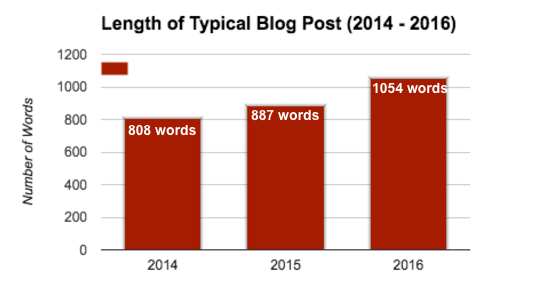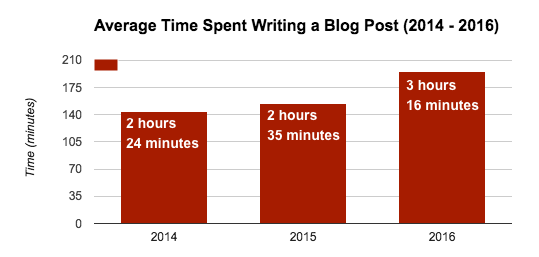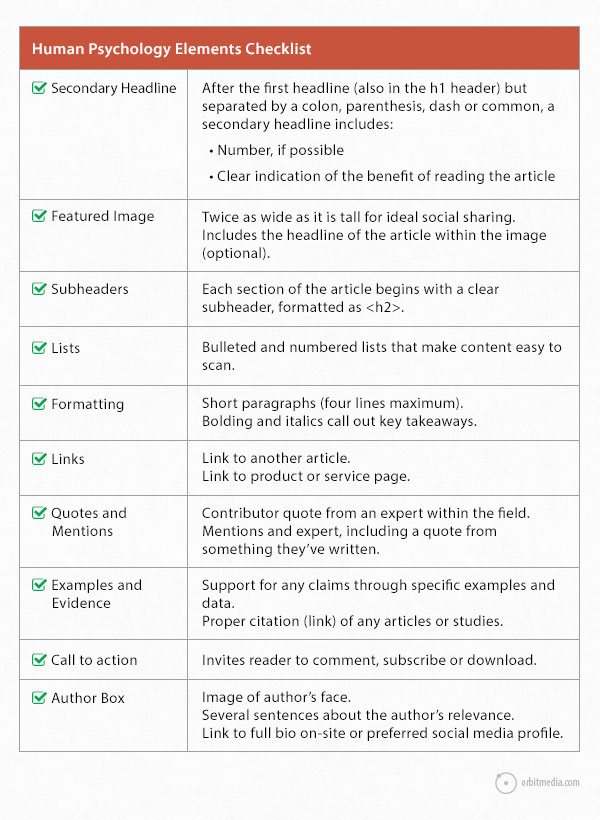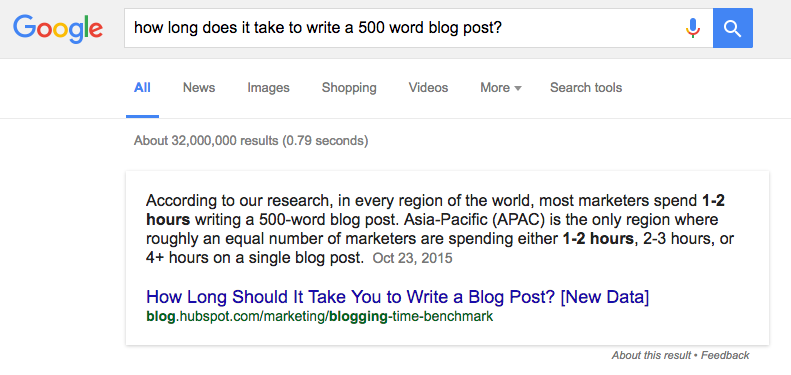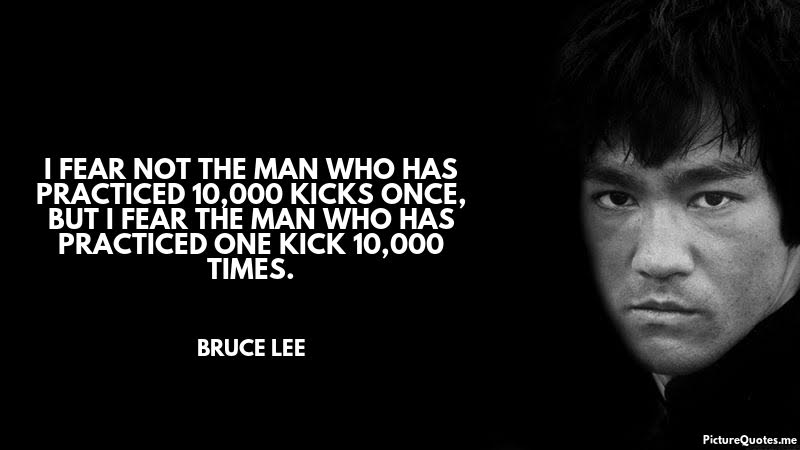- Share The Future of Content Marketing: How to Adapt Your Content for 2017 on Facebook
- Share The Future of Content Marketing: How to Adapt Your Content for 2017 on Twitter
- Share The Future of Content Marketing: How to Adapt Your Content for 2017 on Linkedin
- Share The Future of Content Marketing: How to Adapt Your Content for 2017 via email
 With the nights now looming long, it’s that time of season when we begin looking forward to the next year and thinking about what we need to change to stay competitive. There’s not much more we can learn about 2016, but there’s a lot we can learn from 2016. This article examines the ways content marketing and content marketing SEO will continue to evolve in the next 12 months.
With the nights now looming long, it’s that time of season when we begin looking forward to the next year and thinking about what we need to change to stay competitive. There’s not much more we can learn about 2016, but there’s a lot we can learn from 2016. This article examines the ways content marketing and content marketing SEO will continue to evolve in the next 12 months.
#1 Trend: Content Will Become More Labor Intensive and Higher Quality
Taking more time to produce longer content is the big trend in content marketing. Marketers are spending a lot more time on each post and writing a lot longer than they did in the past. My company Orbit Media Studios just finished our third annual survey of 1,000 bloggers and the trend is clear.
- In 2016, the average blog post took 3 hours 16 minutes to write. That’s a 26% increase from last year.
- The average blog post is 1,050 words long, up 19% from last year.
It’s a quest for quality and more bloggers are going big. This is probably the biggest trend in content marketing.
Influencer Marketing Will Continue to Increase in Importance
I don’t see anything reducing the importance of influencer marketing, unless celebrities somehow become less famous. Hard to imagine that happening. But there are influencer marketing tactics that may decline. For example, readers may get tired of mega-roundups, CTRs for those posts may decline and results would drop. This could make those giant roundups less effective and less popular.
Otherwise influencer marketing is on the rise, and that probably won’t slow down in our lifetimes. Orbit’s survey found that it’s become a more popular tactic every year for the last three years. Take a look:
This doesn’t surprise me. Here’s why:
- There are people in every industry who have become influential over large groups of people. In the future, they will likely become even more influential.
- There are brands that want very badly to connect with those people. In the future, this will also continue.
- The tools and tactics that connect those brands to those people have become more efficient and effective. This will also continue.
So look for more mini-celebrity endorsements and more collaborative content. Influencer marketing rewards those that are good at networking and personal branding. The future belongs to friendly, generous people!
 Artificial Intelligence is Changing SEO
Artificial Intelligence is Changing SEO
RankBrain is the name of Google’s machine-learning artificial intelligence system. It helps sort through Google’s search results and is an important new part of how Google is improving their rankings.
- Before: Google engineers (humans) created hypothesis about possible improvements to its algorithm, then they made changes within test environments. Next those test search results were shown to small armies of quality raters (humans) who then scored the search results against criteria provided by Google. If the tests looked good, Google would make the change.
- Now: Google is built to use machine learning (artificial intelligence) to create and run its own tests to see how they perform with a group of searchers. If the searchers click on a search result without immediately searching again, that’s a good sign. If they click on a search result and stay on that page rather than immediately hitting the back button, that’s a good sign.
So now more than ever, search optimization is about quality. It’s about the visitor. It’s about making great pages. But what’s a great page? It’s a page that people land on and love.
To maximize your visitors’ time on page, to increase your visitors’ “dwell time,” to reduce the “short click” and to send strong “user-interaction signals,” you need to build pages that keep scanners moving and make visitors forget they have a back button. Here’s how:
- Start with a visual. A strong featured image helps get the visitor engaged.
- Add a video. Videos are the strongest visuals. Adding videos high on pages is a good way to keep visitors.
- Short paragraphs. No one wants to read a long paragraph on the Internet.
- Subheads and bolding. These are types of formatting that keep scanners moving.
- Internal links. This encourages visitors to click forward, not back.
- Long, detailed articles.
Here’s the “human factors” section of Orbit’s content checklist. Add as many of these as you can!
As always, if we’re doing SEO, our goal is the make the best page on the Internet for our topic. It’s good for visitors and it’s good for RankBrain. Google’s new AI system has great ways to find quality. Your job is to create that quality.
Great Content Marketing Focuses on the End User
There’s one, all important thing about content. It must answer the “what’s in it for me” question. It has to be focused on the reader.
This should almost go without saying, but a lot of people miss it. There’s one, sure-fire way to make sure that your content is empathetic, once and for all. It’s to write your content mission statement. It’s easy and powerful. You can use this template:
source: How to Create a Content Mission Statement
Just this morning I was working with a client on this. They expedite passports and visas and they were looking for content marketing tips on their blog. We talked though a mission and it took just a few minutes. Here’s what we came up with:
“Swift Passport Services blog, email and social content is where
international travelers find
passport, visa and international travel tips
to make traveling easier”
That’s it! We all agreed that this was exactly right. Then we looked at the blog and noticed the “Company News & Announcement” section. It obviously didn’t fit, so we killed it instantly. Then we took out the domestic travel section. Suddenly, and forever after, they have a better blog.
Empathy is the greatest marketing skill.
 How Will Voice Search Impact Content Marketing?
How Will Voice Search Impact Content Marketing?
This is another mega-trend. According to Gartner’s predictions, we’re moving into a world of screen-less search. Here’s an excerpt:
By 2020, 30 percent of web browsing sessions will be done without a screen.
New audio-centric technologies, such as Google Home and Amazon’s Echo, are making access to dialogue-based information ubiquitous and spawning new platforms based on “voice-first” interactions. By eliminating the need to use ones’ hands and eyes for browsing, vocal interactions extend the utility of web sessions to contexts such as driving, cooking, walking, socializing, exercising and operating machinery. As a result, the share of waking hours devoid of instant access to online resources will approach zero.
OK, so we’ll be talking to Alexa, Siri, and Google, and they’ll be talking back to us. We ask, they answer. Not a pixel in sight. But that doesn’t mean that we can’t adapt to natural language search. Here’s what you can do to get your content ready.
- Write complete, full-sentence questions in your articles, rather than breaking it up between several sentences.
How long does it take to write a typical blog post?
- Write complete, full-sentence answers in your articles.
The typical 500-word blog post takes 2 to 2.5 hours to write.
- Use long, specific phrases in your titles and headers.
The Length of Time to Write Blog Posts: 5 Research Studies
Combine these and you’ll increase the chance of your content marketing appearing in the knowledge box at the top of search results. I can’t say for sure if this affects your clickthrough rate (Google is giving visitors the answer right there in the search results page) but it is fun to see yourself at the top.
Dr. Pete from MOZ called this “ranking number zero.” If nothing else, it’s an appearance of your brand!
As search evolves, natural language search will still happen in browsers, on screens. Super long, natural language-type keyphrases are entered into Google all the time. There will be winners and losers, as always. These tips should help you win.
Top Five Skills a Marketer Needs to be Proficient in for SEO in 2017
There are core skills that you can’t really do without. Here’s my top 5…
- Writing
It should be obvious, but it’s not. A lot of SEOs don’t really work to improve their writing skills. But this is the foundation of everything. What are people searching for? Content. What ranks? Content. Why does the visitor stay on the page? Content.
If you aren’t confident in your writing skills, focus on this. You’re eventual goal is to make the best page on the Internet for your topic. If you’re not doing that, you’re really not doing SEO. - Research
There are all kinds of research involved in SEO. They are all important.
Researching topics: What should we blog about? (here’s how to research blog topics)
Researching keywords: What is this audience searching for?
Researching influencers: Who in this niche is creating content for relevant websites?
Research as a format for content: What are people likely to cite, reference, mention and link to - Outreach
To rank, you need authority. To get authority, you need links. To get links, you need visibility among content creators. To be visible to these people, you need to do outreach. This is a big part of the job. Good SEOs are friendly online networkers, who know how to use social media, who know how to connect with people online. - Visual Design
Surprised by this one? You shouldn’t be. Strong visuals can make a big difference in rankings—it’s a secret weapon for great SEOs. Here are examples:
– A useful infographic is more likely to get picked up by other bloggers, which is good for authority.
– Helpful screenshots can make a post more useful, and more likely to get referenced by other sites.
– A compelling featured image increases visibility in social media, making it more likely to be seen by content creators.
– A strong video can keep visitors on the page longer, increasing “dwell time,” sending good user-interaction signals to Google - Analytics
It’s called “optimization” because it’s ongoing. This isn’t a one-time action. It’s a series of actions. And they are all based on data. Without Analytics, you’ll have no idea what’s working, what’s failing, and what’s almost working. Sometimes, a piece of content just needs a little nudge. But without data, you don’t know where to push.
Don’t have these skills? Don’t worry. You’re going to have a very long, successful career and there’s plenty of time to learn them all. Start sooner and study harder if you want to ramp up fast.
Work harder than the guy next to you. Study like it’s finals week. And never, never give up!
SEO is constantly evolving, so our approach to it needs to constantly evolve too. To find out more about the future of SEO, sign up for Curata’s Content Marketing Expert Series Webinar with me on The Future of SEO below.



